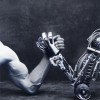Site Topics
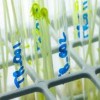
Online Graduate Education in Biotechnology
Jul 6th
I recently blogged about harnessing the power of bioinformatics for cancer research. An interested reader, Linda Zabriske, commented that the blogosphere (and government organizations such as the Bureau of Labor Statistics) has been gradually filling with talk about cancer research and its role in our future. Linda’s tool, the Online Graduate Programs, collates some of these articles and ideas and she’s co-written this month’s post with me, reflecting on Online Graduate Education in Biotechnology.
In past decades, the field of biological science and engineering were considered separate and distinct. Biology dealt with the complexities and wonders of humans, animals and plants, More >

A novel approach for curing Alzheimer´s disease
Jun 24th
Alzheimer’s disease (AD) steals memories and disrupts lives of 5.4 million Americans (according to Alzheimer’s Foundation statistics) and 26.6 million people worldwide. Moreover AD is predicted to affect 1 in 85 people globally by 2050! AD still cannot be cured and is degenerative, so the sufferer relies on others for assistance, placing a great burden on the caregiver, who are mostly spouses or close relatives.
Now a new study conducted by a group Harvard, Boston University, The University of Alberta, The University of Arizona, and The Chopra Foundation ascribe AD memory loss to disruption of microtubules by zinc imbalance (March 23 More >

What is Bioinformatics?
May 8th
Bioinformatics is a relatively new field and as such, many people aren’t exactly sure what “bioinformatics” really is.
The NIH Biomedical Information Science and Technology Initiative defines bioinformatics as:
“Research, development, or application of computational tools and approaches for expanding the use of biological, medical, behavioral or health data, including those to acquire, store, organize, archive, analyze, or visualize such data.”
Still confused? Don’t fret, most people are when they hear that definition. I usually like to tell people:
“Bioinformatics combines the latest technology with biological research.”
Over the past decade or so, and even prior, computers have become an integral part of every industry. Biological More >
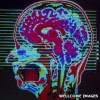
Jumping genes in your brain?
Apr 26th
Mobile chunks of DNA that walk their way from one position in the genome to another may affect neurological diseases and could have subtle influences on normal brain function and behavior, according to a recent study in Nature.
Alu is an example of a so-called “jumping gene” – a transposable DNA sequence that “reproduces” by copying itself and inserting into new locations throughout the genome. Alu elements are classified as SINEs, or Short INterspersed Elements. All Alus are approximately 300 bp in length and derive their name from a single recognition site for the restriction enzyme AluI located near the middle of the Alu More >
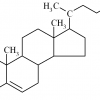
Bad Cholesterol
Apr 12th
When someone mentions cholesterol many will say, how is your HDL? Cholesterol travels through the blood attached to lipoproteins. From a health prospective we try to maintain the good cholesterol (High density lipoproteins or HDL) and decrease the bad cholesterol (Low density lipoproteins or LDL). The HDL aids the body in removal of bad cholesterol in the blood whereas LDL causes build up of plaque within arteries restricting blood flow and hardening of the arteries that may result in heart disease. Control of cholesterol levels is through a number of ways such as low cholesterol diets, weight loss and drugs.
Cholesterol More >

Multiple Paths to Autism
Apr 10th
There was a great deal of excitement last week as intriguing findings published in Nature yield clues into the mystery of autism. Autism, or more correctly put Autism Spectrum Disorders (ASD) are defects in neural development that manifest themselves early in childhood as affected children have difficulties in socialization and language skills. Like any childhood disease autism is unimaginably frustrating for the millions of parents and relatives that have to find the best way to cope with a child who will have unexpected needs. Even more frustrating perhaps is the unanswered questions surrounding the cause of the disease and the More >
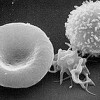
Blood
Apr 9th
Within the human body we have 60,000 miles of blood vessels. We have three types of cells in the blood, red, white, and platelets. Red blood cells transport oxygen throughout the body while white blood cells help protect us against infection. Platelets are involved in clotting. When you get a cut your vessels send out signals calling for for platelets and proteins to help in clotting. In addition, white blood cells also come to the rescue. A blood clot is a group of chemicals and cells that work together to stop the flow of blood in a small area. All More >


